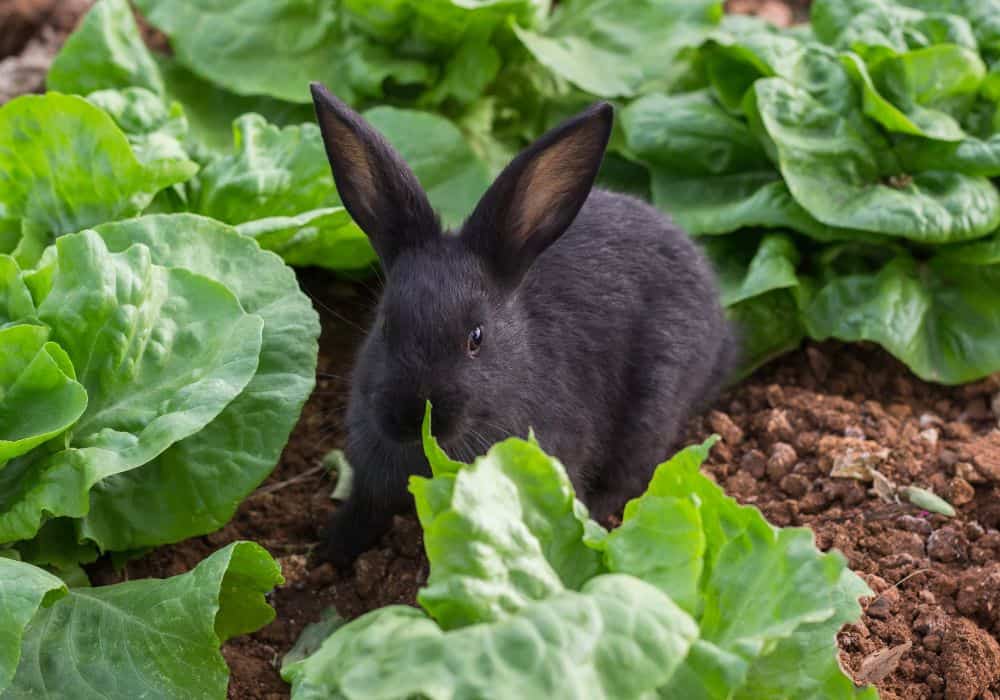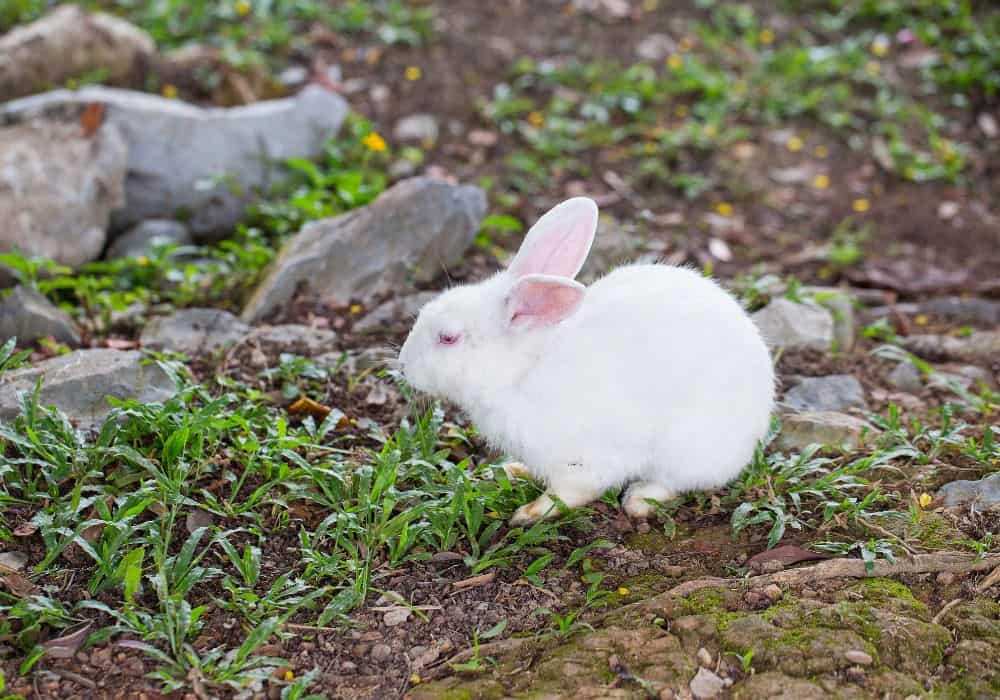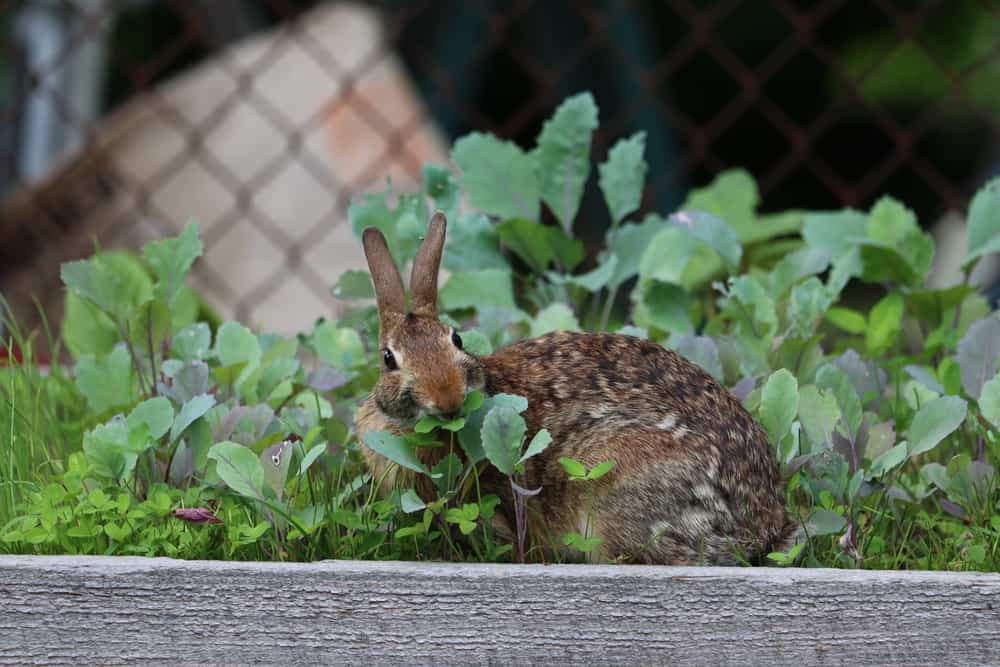While rabbits may be the cute main character of several children’s books, they’re often the villain in your yard or garden. They may not be as destructive as other creatures, but they can wreak havoc as they burrow in the yard and munch down on whatever greens you have to offer.
Homemade rabbit repellents are a great tool to keep them out of your yard without resorting to lethal methods. These often utilize natural materials that are safe for children, pets, and plants, and you may already have the ingredients on hand.
Before you can dive in with a pest-control plan, you should make sure it’s actually rabbits you’re dealing with. Keep reading to learn more about the sure signs of rabbit presence, what repels them, and what you can do to make your yard less attractive (at least to bunnies).
Signs of Rabbit Activity
You’re more likely to see signs of rabbits around your home than the actual rabbits, at least at first. They will chew on your ground level plants and destroy them and random holes will pop up as they move in.
Rabbits also chew bark off trees at the ground level, so anything higher may be something else. They’re clean biters, meaning that anything they nibble on will have straight lines. Rabbits are most active in early spring, more than happy to snatch up anything as it sprouts.
The rabbits themselves are easy to identify, thanks to their long ears and adorable faces. Most breeds are gray or brown and about 15 to 19 inches long. They prefer to be active at dawn and dusk, but you may see them anytime during the day.
Their waste looks similar to deer scat in both size and appearance, but rabbits won’t leave behind piles unless they’re stationary; it usually drops behind them as they hop about. These round pellets are usually hard and brown with a 1 cm diameter.
Once you’re sure you’re dealing with rabbits, you can use these methods to deter them from your yard.
Different Ways to Repel Rabbits
The main deterrent methods for wild rabbits include:
- Fencing
- Offensive odors
- Taste barriers
- Natural Predators
- Commercial repellents
What you want to use depends on personal preference, what you may already have on hand, and special considerations for your home. Someone renting their property may not be able to install effective fencing, and those with small children and animals may want to go a more natural route.
Whatever your needs, one of these methods should work for you.
The Anatomy of Effective Homemade Rabbit Repellent Recipes
In the following sections, we outline several DIY rabbit repellent spray recipes you can use. These focus on something that rabbits find unappealing, such as a scent or flavor, as well as a binding method, usually dish soap.
We highly recommend that you make these recipes in bulk, usually a gallon of water at a time, to have enough for your entire yard and regular reapplication. Understand that binding agents like dish detergent are not unnecessary ingredients, and you need something that will help the other materials adhere to the intended surfaces.
Use clean spray bottles for your mixtures, ideally ones that weren’t previously used for cleaning or pest-control chemicals. This limits the opportunity for cross contamination that could accidentally kill or injure the rabbits or those in your home.
1. Fencing
If you can set up fencing in your yard, this can be the most effective method of deterring rabbits and other small animals. This is especially helpful if you’re only worried about a small section, like your garden, and want to leave the rest of the yard untouched or even open to the rabbits.
For most situations, one or two inch chicken wire fencing is enough to ward off the rabbits. Use a smaller opening whenever possible, and secure the fencing to sturdy stakes so it won’t fall over easily.
Two feet is usually enough to stop them from jumping over, but you can always go higher as needed.
Pop-up nets or crop cages provide an extra level of protection by blocking the plants off from all but one side. They anchor in the ground and can even deter aerial thiefs from snacking on your garden.
If rabbits aren’t your only concern, you may need stronger fencing to ward off the thieves. Electric fences are pretty comprehensive at what they keep away, but they cost more to set up and can be difficult to maintain.
2. Offensive Odors

Rabbits have sensitive noses, which makes your job of warding them off a bit easier.
Some of their least favorite scents include:
- Citrus
- Peppermint
- Sulfur
- Lavender
- Linseed oil
- Red pepper
- Black pepper
- Cayenne pepper
- Garlic
- Organic material (raw eggs, bone meal, blood meal, urine)
To create an odor barrier, combine some of these materials in a gallon of water and let it steep for at least two days in the sun. Fresh materials like garlic cloves and hot peppers are best, but you can also use what you have on hand to have a similar effect.
Strain the chunky material from the liquid and funnel it into spray bottles, then cover the perimeter with the foul-smelling concoction. You can also try planting their least favorite plants, like lavender and mint, along your fence or property line.
Some people claim that grated or cubed Ivory or Irish Spring Soap works well to deter rabbits. While reviews are mixed, it seems some have had success with putting the bits of soap in a drawstring pouch or cheese cloth pouch and hanging them up (near ground level).
Urine is another powerful scent that rabbits are sure to notice. You can purchase bottled coyote urine to spray around your yard, but having your pet pee further out may have similar results.
Whatever you use, make sure you reapply at least every other day to start. You can stretch this out as time goes on, but you want to keep the scent as fresh as possible.
3. Taste Barriers
Similarly, you can use the spray on your plants or anything they’re chewing on to convince them there’s nothing tasty in your yard. Steeping tabasco sauce, chili powder, garlic powder, and other foul ingredients in a milk jug may be the solution you’re looking for.
Taste barriers can also be made by spraying down your plants and sprinkling the powder on them. When they take a bite, they’ll be unpleasantly struck by something spicy and sure to turn tail.
Take care not to scorch your plants. We suggest trying a scent barrier first and then doing a test patch if you need to move to the taste barrier afterwards.
4. Natural Predators

You shouldn’t let your dog lie out all night licking their lips as they wait for a rabbit snack, but you can use their presence to strike fear in the rabbits.
Relocating their poop and having them pee around the yard may be enough to scare the bunnies. You can also sit with them outside during the morning and evening time (when rabbits are most active), brush them outside so they leave shed fur behind, and even set their bedding out.
If you are outside with your dog and understand there are rabbits about, keep them on a lead or have a strong recall; you don’t want them to chase the critters out of your yard or catch a potentially diseased rodent.
5. Commercial Repellent
Commercial repellents may not be the DIY recipe you’re looking for, but there’s usually an effective option that meets most of your criteria. If the homemade repellents above aren’t working out, a commercial product may be your only option for sending the rabbits away.
While many fall back on harsh chemicals that may compromise your yard, there are plenty of options that are:
- Pet and child friendly
- Biodegradable
- Garden-safe
- Rain resistant
These can offer more relief in your reapplication schedule and may be more effective at telling your furry invaders they aren’t welcome. If you’re unsure what’s available. Consider speaking with a professional pest control service to understand what options meet your standards.
Conclusion
Rabbits may mean no harm when they traipse into your yard, but they can do a lot of damage. If you see any signs of their presence, it’s important to respond with a proven repellent before they make themselves at home.
When making your homemade rabbit repellents:
- Utilize a fence first (whenever possible)
- Make more than enough to allow for several applications
- Steep the materials in a milk jug for 2+ days for strong odors and tastes
- Be mindful of how certain ingredients may impact your garden or those in your home
- Reapply often
Unsure of what method you should use or still dealing with rabbits in your yard? Let us know in the comments how we can help.
